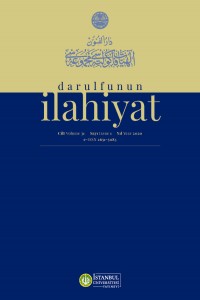Abstract
The present book is a revised version of the author’s doctoral thesis, submitted and defended at the University of Copenhagen in 2016. The book starts with an introduction and continues with four chapters, titled respectively “God’s Unknowability: Tanzīh as Neoplatonic Via Negativa”, “The Theophanic Creator-God: The Muʿill as One and Multiple”, “The Experience of Divine Love, Creation, and Cosmology”, “The Neoplatonic Role of the Primordial Muḥammad in Ḥallāǧ’s Cosmology”. The book is finalized with a conclusion which summarizes all the chapters. As the above-mentioned chapter headings already stress, the introductory section announces to the readers the author’s strong and persistent stance on placing the writings of Ḥallāj’s in the Neoplatonist backdrop. As the author explicitly states, this is a book to “analyse and reconstruct Ḥallāj’s sufi thought through a Neoplatonic lens” and to try and present Ḥallāj’s own version of Neoplatonism. The author opposes those who have studied Ḥallāj’s texts in the Quranic and Islamic setting and have allegedly “neglected the Hellenised context in his mysticism” (p. 2), including the writer of the main work in the Ḥallāj studies, i.e., Louis Massignon.1 This is of course to set aside all the classical Muslim pioneers of theoretical mysticism after Ḥallāj, such as Ibn Arabi, Qūnawī, Dāwud Qayṣarī, Mulla Fanārī, Ruzbihan Baqlī, Mulla Ṣadrā etc., none of whom saw in Ḥallāj a representative of the Arabized falsafa in Islam, as they did in the case of
Fārābī and Ibn Sīnā.
Keywords
References
- The Neoplatonic Thought of Ḥusayn Ibn Manṣūr al-Ḥallāǧ, Saer El-Jaichi
Abstract
The present book is a revised version of the author’s doctoral thesis, submitted and defended at the University of Copenhagen in 2016. The book starts with an introduction
and continues with four chapters, titled respectively “God’s Unknowability: Tanzīh as Neoplatonic Via Negativa”, “The Theophanic Creator-God: The Muʿill as One and Multiple”,
“The Experience of Divine Love, Creation, and Cosmology”, “The Neoplatonic Role of the Primordial Muḥammad in Ḥallāǧ’s Cosmology”. The book is finalized with a conclusion which summarizes all the chapters. As the above-mentioned chapter headings already stress, the introductory section announces to the readers the author’s strong and persistent
stance on placing the writings of Ḥallāj’s in the Neoplatonist backdrop. As the author
explicitly states, this is a book to “analyse and reconstruct Ḥallāj’s sufi thought through a Neoplatonic lens” and to try and present Ḥallāj’s own version of Neoplatonism. The author
opposes those who have studied Ḥallāj’s texts in the Quranic and Islamic setting and have allegedly “neglected the Hellenised context in his mysticism” (p. 2), including the writer
of the main work in the Ḥallāj studies, i.e., Louis Massignon.1 This is of course to set aside all the classical Muslim pioneers of theoretical mysticism after Ḥallāj, such as Ibn Arabi,
Qūnawī, Dāwud Qayṣarī, Mulla Fanārī, Ruzbihan Baqlī, Mulla Ṣadrā etc., none of whom saw in Ḥallāj a representative of the Arabized falsafa in Islam, as they did in the case of
Fārābī and Ibn Sīnā.
Keywords
References
- The Neoplatonic Thought of Ḥusayn Ibn Manṣūr al-Ḥallāǧ, Saer El-Jaichi
Details
| Primary Language | English |
|---|---|
| Journal Section | Book Review and Criticism |
| Authors | |
| Publication Date | June 30, 2020 |
| Submission Date | May 27, 2020 |
| Published in Issue | Year 2020 Volume: 31 Issue: 1 |


